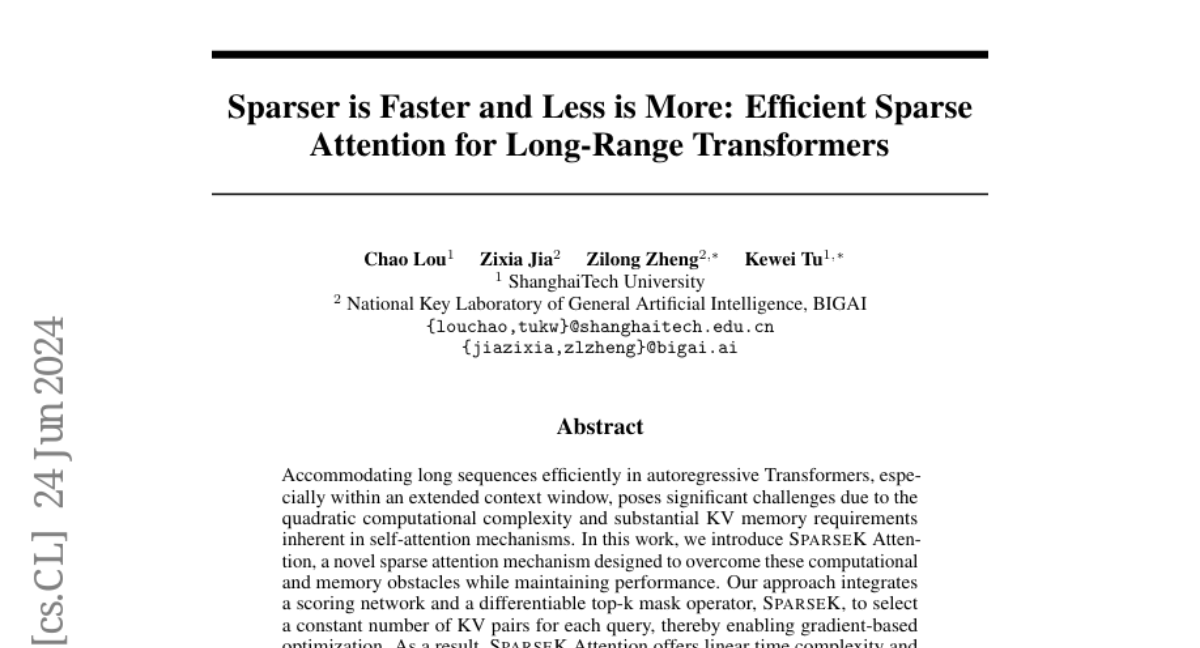Sparser is Faster and Less is More: Efficient Sparse Attention for Long-Range Transformers
Chao Lou, Zixia Jia, Zilong Zheng, Kewei Tu
2024-06-25

Summary
This paper talks about SPARSEK Attention, a new method for improving how Transformers handle long sequences of data. It focuses on making the process faster and less memory-intensive while still performing well.
What's the problem?
Transformers, which are models used for tasks like language processing, struggle when working with long sequences because their attention mechanism requires a lot of computational power and memory. This leads to slow performance and challenges when trying to analyze or generate long texts or data.
What's the solution?
The authors introduced SPARSEK Attention, which uses a smart way to manage attention by selecting only a fixed number of key-value pairs for each query. This reduces the amount of computation needed from quadratic (which gets much slower as the sequence length increases) to linear (which scales much better). They also designed this method to work seamlessly with existing large language models, requiring only minimal adjustments to integrate it effectively.
Why it matters?
This research is important because it allows Transformers to process longer sequences more efficiently, making them faster and less demanding in terms of memory. This advancement can lead to better performance in various applications, such as language modeling and other tasks that involve large amounts of data, ultimately enhancing the capabilities of AI systems.
Abstract
Accommodating long sequences efficiently in autoregressive Transformers, especially within an extended context window, poses significant challenges due to the quadratic computational complexity and substantial KV memory requirements inherent in self-attention mechanisms. In this work, we introduce SPARSEK Attention, a novel sparse attention mechanism designed to overcome these computational and memory obstacles while maintaining performance. Our approach integrates a scoring network and a differentiable top-k mask operator, SPARSEK, to select a constant number of KV pairs for each query, thereby enabling gradient-based optimization. As a result, SPARSEK Attention offers linear time complexity and constant memory footprint during generation. Experimental results reveal that SPARSEK Attention outperforms previous sparse attention methods and provides significant speed improvements during both training and inference, particularly in language modeling and downstream tasks. Furthermore, our method can be seamlessly integrated into pre-trained Large Language Models (LLMs) with minimal fine-tuning, offering a practical solution for effectively managing long-range dependencies in diverse applications.